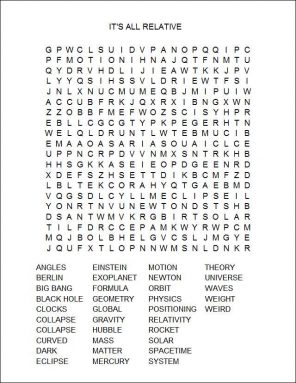Einstein taught us: It’s all ‘relative’
A century ago, this physicist radically altered how we would come to view the universe
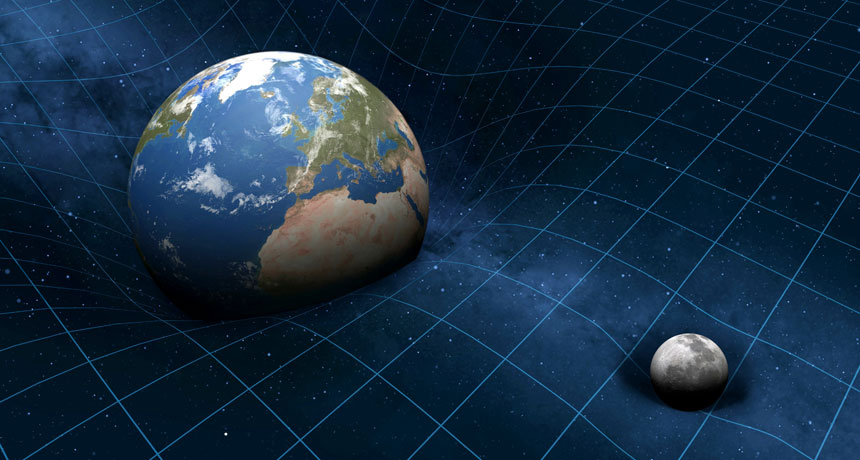
This image shows that celestial objects make dents in the fabric of space-time. The Earth, being 81 times more massive than its moon (right), induces a much greater curvature. According to general relativity, this curvature is what we perceive as gravity.
Mark Garlick / Science Source
While still a relatively young scientist, Albert Einstein painted a new picture of the universe. Some of his final brush strokes emerged on November 4, 1915 — a century ago today. That’s when this physicist shared the first of four new papers with the Prussian Academy in Berlin, Germany. Together, those new papers would outline what would be his general theory of relativity.
Before Einstein came along, scientists believed that space always stayed the same. Time moved at a rate that never changed. And gravity pulled massive objects toward each other. Apples fell from trees to the ground because of the Earth’s strong pull.
All of those ideas came from the mind of Isaac Newton, who wrote about them in a famous 1687 book. Albert Einstein was born 192 years later. He grew up to show that Newton was wrong. Space and time were not unvarying, as Newton had described them. And Einstein had a better idea about gravity.
Earlier, Einstein had discovered that time does not always flow at the same rate. It slows down if you are moving very fast. If you were traveling at high speed in a spaceship, any clocks onboard or even your pulse rate would slow down compared with your friends back home on Earth. That clock-slowing is part of what Einstein called his special theory of relativity.
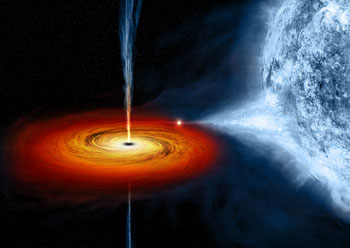
Einstein also showed that the way mass alters space makes bodies move as if they were pulling upon each other, just as Newton had described. So Einstein’s theory was a different way of describing gravity. But it was also a more accurate one. Newton’s idea worked when gravity is not especially strong on all scales, such as near the sun or maybe a black hole. Einstein’s descriptions, by contrast, would work even in these environments.
It took several years for Einstein to figure all of this out. He had to learn new kinds of math. And his first try didn’t really work. But finally, in November 1915, he found the right equation for describing gravity and space. He called this new idea for gravity the general theory of relativity.
Relativity is the key word here. Einstein’s math had indicated that time would not seem to slow down to an observer who was speeding along. It only showed up by comparing that person’s time relative to what it was back on Earth.
Nor was time the only thing that could stretch with relativity. In Einstein’s theory, time and space are closely related. So events in the universe are referred to as locations in spacetime. Matter moves through spacetime along curving pathways. And those pathways are created by the effect of matter on spacetime.
Today scientists believe that Einstein’s theory is the best way to describe not only gravity, but also the entire universe.
Strange — but very useful
Relativity sounds like a very strange theory. So why did anyone believe it? At first, many people didn’t. But Einstein pointed out that his theory was better than Newton’s theory of gravity because it solved a problem about the planet Mercury.
Astronomers keep good records about the orbits of planets moving about the sun. Mercury’s orbit puzzled them. Each trip around the sun, Mercury’s closest approach was a little beyond where it had been the orbit before. Why would the orbit change like that?
Some astronomers said that gravity from other planets must be tugging on Mercury and shifting its orbit a bit. But when they did the calculations, they found that gravity from the known planets couldn’t explain all of the shift. So some thought there might be another planet, closer to the sun, that also tugged on Mercury.

Still, this did not satisfy everyone. So Einstein recommended another way that scientists might test his theory. He pointed out that the sun’s mass should bend the light from a distant star slightly as its beam passed near to the sun. That bending would make the star’s position in the sky look like it was slightly moved from where it would usually be. Of course, the sun is too bright to see stars just beyond its edges (or anywhere when the sun is shining). But during a total eclipse, the sun’s intense light briefly becomes masked. And now stars become visible.
In 1919, astronomers trekked to South America and Africa to view a total eclipse of the sun. To test Einstein’s theory, they measured the locations of some stars. And the shift in the stars’ location was just what Einstein’s theory had predicted.
From then on, Einstein would be known as the man who replaced Newton’s theory of gravity.
Newton is still mostly right.
Newton’s theory still works pretty well in most instances. But not for everything. For example, Einstein’s theory called for gravity to slow down some clocks. A clock on a beach should tick just a bit slower than one on a mountaintop, where gravity is weaker.
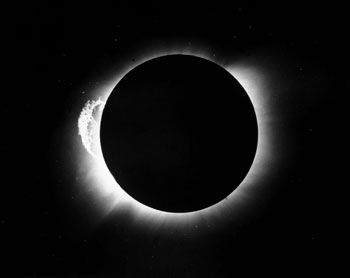
But the benefits of general relativity go far beyond just helping us stay on the right road. It helps science explain the universe.
Early on, for instance, scientists studying general relativity realized that the universe might be getting bigger all the time. Only later would astronomers show that the universe actually is expanding. The math used to explain general relativity also led experts to foresee that fantastic objects like black holes could exist. Black holes are regions of space where gravity is so strong that nothing can escape, even light. Einstein’s theory also suggests that gravity can create ripples in space that speed across the universe. Scientists have built huge structures using lasers and mirrors to try to detect those ripples, known as gravitational waves.
Einstein didn’t know about such things as gravitational waves and black holes when he started working on his theory. He was just interested in trying to figure out gravity. Finding the right math to describe gravity, he reasoned, would make sure that scientists could find laws of motion that would not depend on how anybody was moving.
And it makes sense, when you think about it.
The laws of motion should be able to describe how matter moves, and how that motion is affected by forces (such as gravity or magnetism).
Gravity = acceleration?
But what happens when it is two people that are moving in different speeds and directions? Would both use the same laws to describe what they see? Think about it: If you’re riding on a merry-go-round, the movements of people nearby look very different from what they look like to someone standing still.
In his first theory of relativity (known as the “special” one) Einstein showed that two people in motion could both use the same laws — but only as long as each was moving in straight lines at a constant speed. He couldn’t figure out how to make one set of laws work when people moved in a circle or changed speed.
Then he found a clue. One day he was looking out of his office window and imagined someone falling off the roof of a nearby building. Einstein realized that, while falling, that person would feel weightless. (Please do not try jumping off a building to test this, though. Take Einstein’s word for it.)
To someone on the ground, gravity would appear to make the person fall faster and faster. In other words, the speed of their fall would accelerate. Gravity, Einstein suddenly realized, was the same thing as acceleration!
Imagine standing on the floor of a rocket ship. There are no windows. You feel your weight against the floor. If you try to lift your foot, it wants to go back down. So maybe your ship is on the ground. But it is also possible that your ship might be flying. If it is moving upward at a faster and faster speed — accelerating smoothly by just the right amount — your feet will feel pulled to the floor just as they had when the ship was sitting on the ground.
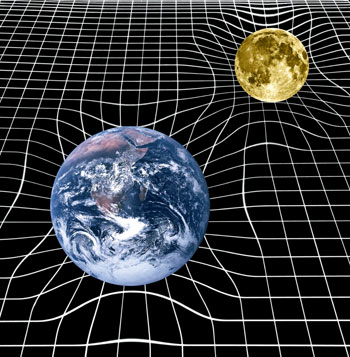
Finding that formula did not prove easy.
For one thing, objects moving through space with gravity don’t follow straight lines. Imagine an ant walking across a sheet of paper without changing direction. Its path should be straight. But suppose there’s a bump in the path because a marble is under the paper. When walking over the bump, the ant’s path would curve. The same thing happens to a beam of light in space. A mass (like a star) makes a “bump” in space just like the marble under the paper.
Because of this effect of mass on space, the math for describing straight lines on a flat sheet of paper doesn’t work anymore. That flat-paper math is known as Euclidean geometry. It describes things like shapes made from segments of lines and angles where lines cross. And it works fine on flat surfaces, but not on bumpy surfaces or curved surfaces (such as the outside of a ball). And it doesn’t work in space where mass makes space bumpy or curved.
So Einstein needed a new kind of geometry. Luckily, some mathematicians had already invented what he needed. It is called, not surprisingly, non-Euclidean geometry. At the time, Einstein didn’t know anything about it. So he got help from a math teacher from his school days. With his new knowledge about this improved geometry, Einstein was now able to move ahead.
Until he got stuck again. That new math worked for many points of view, he found, but not all possible ones. He concluded that this was the best he — or anybody — could do. Nature just wouldn’t allow the complete theory of gravity that Einstein wanted.
Or so he thought.
But then he got a new job. He moved to Berlin, to a physics institute where he did not have to teach. He could spend all of his time thinking about gravity, undistracted. And, here, in 1915, he saw a way to make his theory work. In November, he wrote four papers outlining the details. He presented them to a major German science academy.
The really big picture
Soon afterwards, Einstein began thinking about what his new theory of gravity would mean for understanding the whole universe. To his surprise, his equations suggested that space could be expanding or shrinking. The universe would have to be getting bigger or it would collapse as gravity pulled everything together. But at that time, everybody thought the size of the universe today was as it had always been and always would be. So Einstein tweaked his equation to make sure the universe would stay still.
Years later, Einstein admitted that had been a mistake. In 1929, the American astronomer Edwin Hubble discovered that the universe truly is expanding. Galaxies, huge clumps of stars, flew apart from each other in all directions as space expanded. This meant that Einstein’s math had been right the first time.
Based largely on Einstein’s theory, astronomers today have figured out that the universe we live in began in a big explosion. Called the Big Bang, it took place almost 14 billion years ago. The universe started out tiny but has been growing bigger ever since.
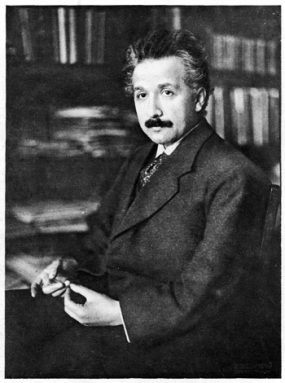
Clifford Will works at the University of Florida, in Gainesville, where is an expert on relativity. “It is remarkable that this theory, born 100 years ago out of almost pure thought, has managed to survive every test,” he has written.
Without Einstein’s theory, scientists wouldn’t understand very much about the universe at all.
Yet when Einstein died, in 1955, very few scientists were studying his theory. Since then, the physics of general relativity has grown to become one of the most important theories in the history of science. It helps scientists explain not only gravity, but also how the whole universe works. Scientists have used general relativity to map how matter is arranged in the universe. It’s also used to study the mysterious “dark matter” that doesn’t shine like stars. General relativity’s effects also help in the search for faraway worlds now known as exoplanets.
“The implications for the further reaches of the universe,” the famous physicist Stephen Hawking once wrote, “were more surprising than even Einstein ever realized.”
Word Find (click here to enlarge for printing)
